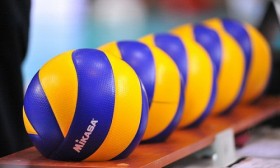
Mikasa ball
Jumping speed is a combination of your rate of force development (RFD) and your reactivity. What is RFD and reactivity?
RFD is how quickly you can access your strength to produce your jumping power and reactive strength is how quickly you can execute your full up and down jumping motion without loss of performance.
HOW TO IMPROVE RFD?
RFD is the speed at which force can be applied. It is very important in jumping because the actual movement happens so quickly that athletes with a slow RFD will not be able to tap into their strength reserves quick enough to jump very high.
One of the best ways to develop RFD is by using various methods of acceleration training. Two of the best accelerative training methods include lifting and jumping from dead stop or relaxed positions, and through the use of bands.
Good choices are box squats and bottom up squats. Box squats are great due to the pause at the bottom which forces you to overcome the weight from a static position, and concentric which require a power rack or similar. These work in the same way as a regular squat but instead of lowering the weight first you start with it in the bottom position resting on the safety pins.
The other training option is through the use of bands. Training with bands is a great way to add an accelerative component to your workouts via accommodating resistance. What is accommodating resistance? Imagine stretching a rubber band. The further you stretch it, the more resistance it has. This is accommodating resistance.
HOW TO IMPROVE REACTIVITY?
Main training method for improving reactivity are plyometrics. Most types of jumps have a plyometric element to them which means that most jumping drills can be described as plyometrics. In terms of choosing the right plyometric exercises to use and the volume of jumps it is best to look at the intensity.
The low intensity jumps compared to the high intensity jumps is that you can do a greater volume of the low intensity ones. For example you can pick up a skipping rope and in 10 minutes perform about 1000 jumps. Try doing 1000 depth jumps and you will probably end up seriously injured well before you get anywhere near that figure.
Some other things that you need to remember is that the higher the intensity the longer you will need to rest between reps and sets in order to maintain your training performance.
The last important item to know about is that the higher the intensity, the better the result. But there is a catch. And it is a big catch so don’t ignore this. In weight training if you want to get strong then the best way to do it is to lift really heavy weights. However you cannot just lift at near maximum levels all the time. Your joints, muscles and CNS just can’t cope with that constant level of stress.
The same applies to jump training. You cannot just go out and perform depth jumps constantly from a high box onto a hard surface. Eventually you will injure yourself. So what do you do? You mix it up. You have to perform a variety of lower intensity jumps in order to gradually build up your capacity to absorb the pounding from the more intense training methods.
SOME NOTES ABOUT DEPTH JUMPS
Last question is how to determine optimal box height? Actually it is a pretty straight forward process. What you do is perform a depth jump from a 6 inch box and record the height touched. Then increase the height of the box in 6 inch increments, recording the height touched each time until you find the box that results in the highest touch.
For example:
Test 1 – Height Touched Off 6 inch box: 290cm
Test 2 – Height Touched Off 12 inch box: 296cm
Test 3 – Height Touched Off 18 inch box: 293cm
Test 4 – Height Touched Off 24 inch box: 292cm
Optimal drop height in this case is 12 inches.
And finaly, remember that landing and jumping with two feet is much easier as two legs make it much easier to balance and minimize the amortization phase.
When you land on a single leg it is much harder for your joints and muscles to absorb the eccentric forces.